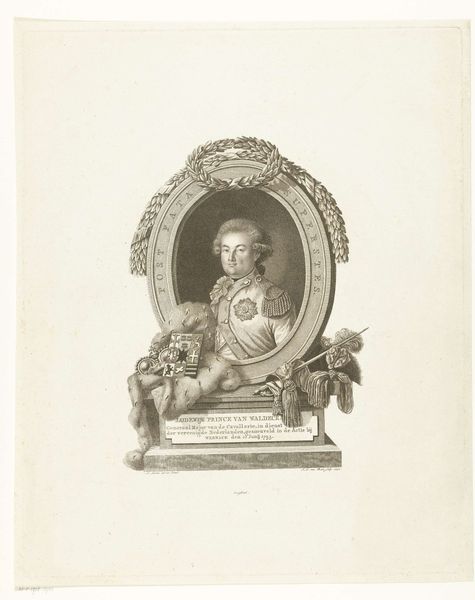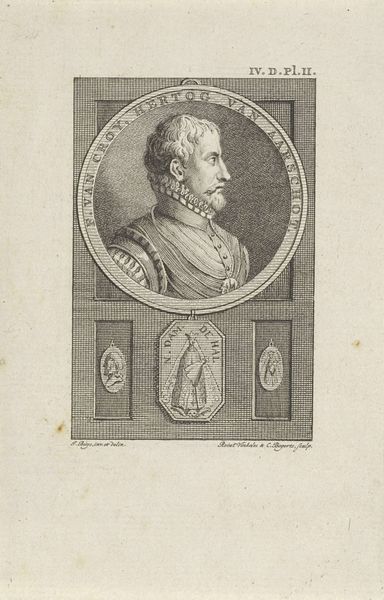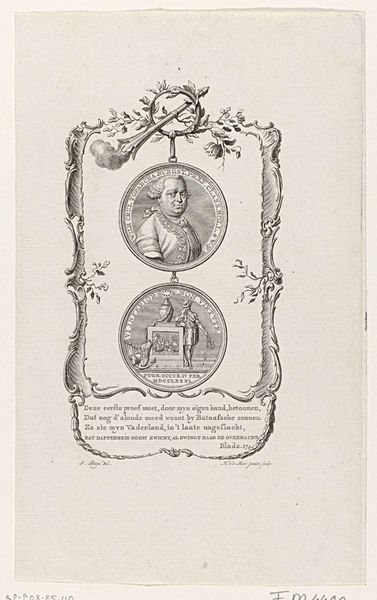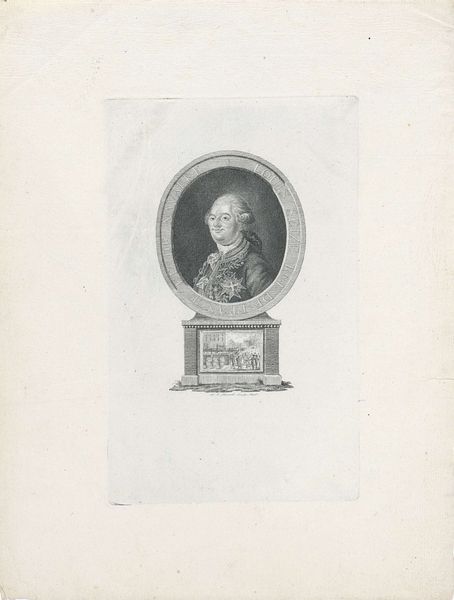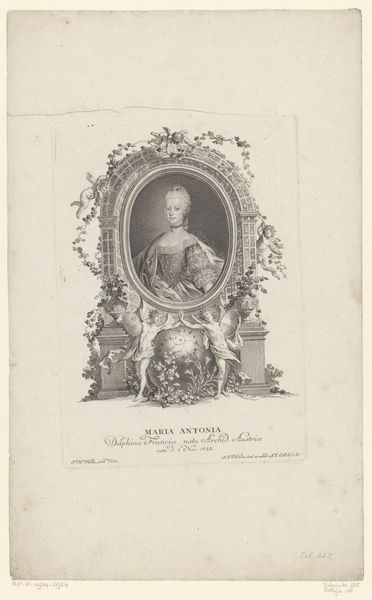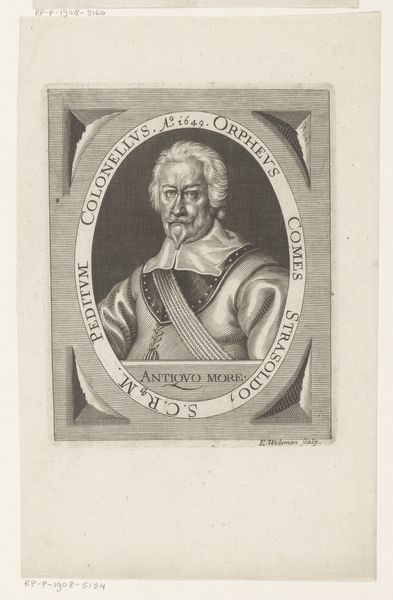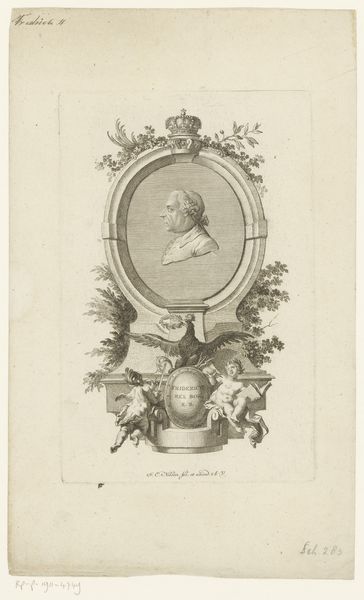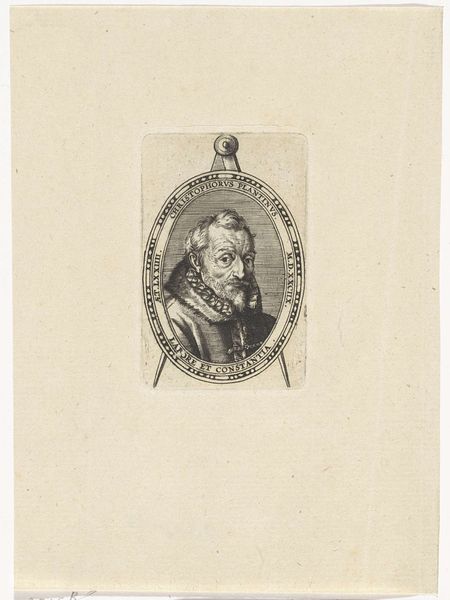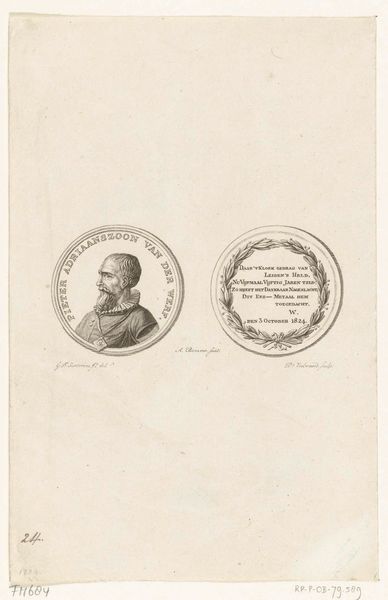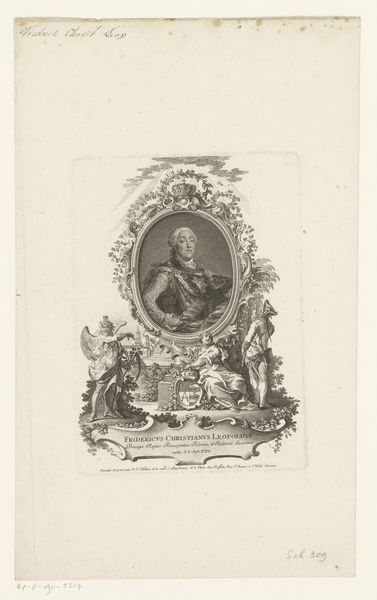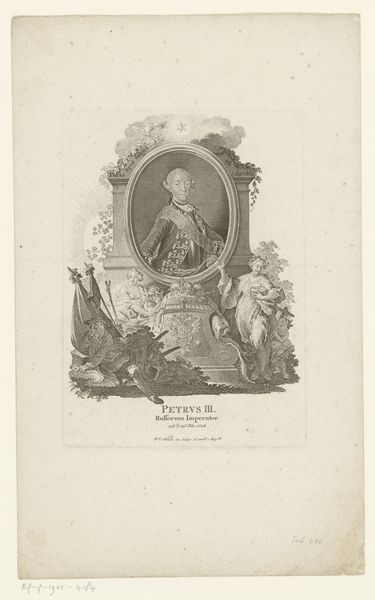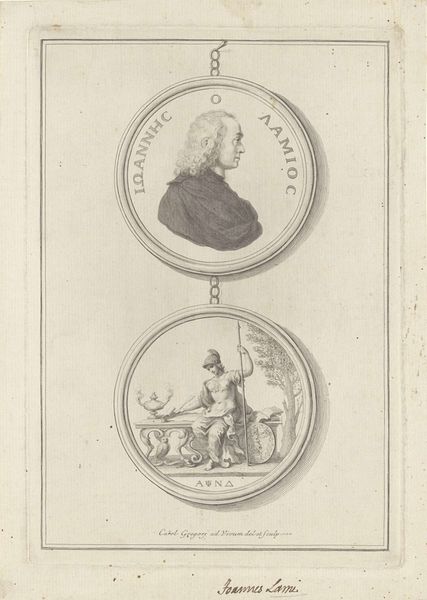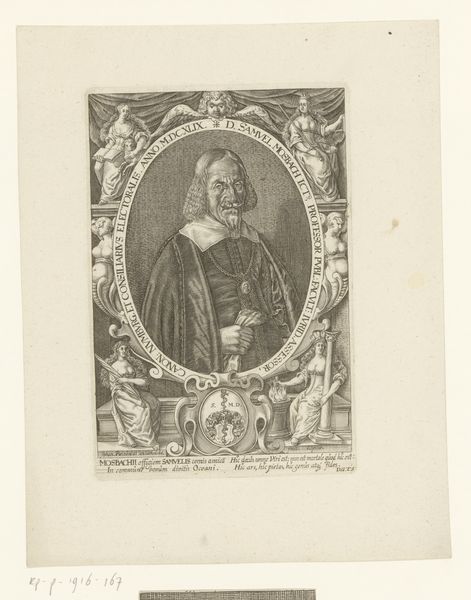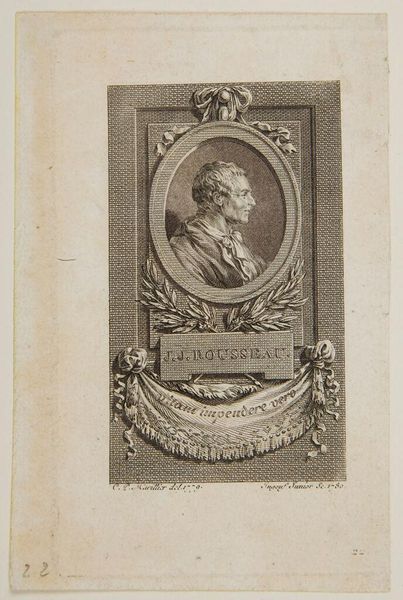
Penning met portret van Johan van der Does, heer van Noordwijk, bevelhebber te Leiden tijdens het beleg, 1574 1722 - 1784
0:00
0:00
drawing, print, paper, pen, engraving
#
portrait
#
drawing
#
blue ink drawing
#
baroque
# print
#
old engraving style
#
paper
#
pen
#
history-painting
#
engraving
Dimensions: height 219 mm, width 138 mm
Copyright: Rijks Museum: Open Domain
Editor: This drawing, made between 1722 and 1784 by Simon Fokke, portrays Johan van der Does. It’s pen on paper, almost like a medal, suspended, and it’s all in these fine, delicate lines. What's your interpretation? Curator: Consider the materials themselves. We have paper, pen, and ink transformed through the labour of the engraver into this "drawing." But look closer. Is it solely a drawing, or is it a reproduction meant for wider circulation? The engraving technique speaks to that. Editor: So you're saying the process of reproduction is as important as the image itself? Curator: Absolutely! The choice of engraving – a *print* medium – democratizes the image. This wasn't about creating a unique artwork for a wealthy patron, but producing multiples. Consider how it spreads Johan van der Does' image beyond the elite. Editor: I see, it is meant for more people. Curator: Exactly. The print medium highlights that the drawing's importance isn't solely aesthetic, but stems from its potential for social and political dissemination. Think about who could access these prints. How did these affect popular perception? And doesn’t the date “1574”, the year of Leiden’s siege, relate to its propagandistic function? Editor: So, the value comes from it being reproduced, not just because of its artistry? Curator: Precisely. We’re looking at the means of production influencing not just *how* it was made but *why.* Examining those circumstances highlights its purpose and effect, challenging traditional notions about drawing's role and worth. Editor: That makes so much more sense. I hadn't considered the implications of printmaking for wider consumption. Thanks for making me look at it from a materialist point of view! Curator: It's fascinating when you view art as both image and object, where materiality affects perception and reach.
Comments
No comments
Be the first to comment and join the conversation on the ultimate creative platform.
